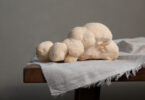For someone who has never been to a wine tasting, it can make you feel like a square peg in a round hole. There’s a connoisseur culture of people who enjoy learning about, locating and trying the best available wines. While you may not be on that level, this quick guide will keep you from feeling like a complete newbie during your first wine-tasting. And with some practice, you can join the ranks of the wine snobs who enjoy good vino with good friends.
1. See It.
Examine the wine’s color and clarity by holding up your glass or viewing it against a white background in a well-lit room. Then ask yourself:
- Is the wine clear and brilliant—or cloudy and dull?
- Is your glass of wine watery and pale—or deep and dark?
- Can you see to the bottom when you look straight into your glass?
- Is the color the same at the rim as it is in the middle of the glass?
Whites will vary on this visual scale as white wines gain color with age. Red wines also vary in their depth of color, and lose color, browning as they age. Wine color is affected most by its age, variety of grape and type of barrel.
2. Swirl It.
Swirling your wine gently exposes it to a larger surface area while increasing its contact with air and intensifying its aroma.
Grip your glass by its base or its stem and make small circles.
Be careful not to hold the glass by its bowl so you aren’t warming the wine with your hand.
3. Smell It.
That initial smell you observe from the wine is called its nose, aroma or bouquet. Common aromas include spices, herbs, fruit and flowers, but different people will smell different things in the same bottle of wine. Certain varieties of wine have their own distinct scents.
Smell the wine several times. Some wines are so complex offering many different aromas and scents. As your senses mature, you’ll be able to identify multiple aromas in a single glass.
Common white wine aromas:
- Chardonnay: apple, peach, apricot, pear, lemon, melon, vanilla
- Sauvignon Blanc: grass, herbs, lime, lemon, grapefruit, pear
- Riesling: grapefruit, melon, apricot, peach, lime, mint, jasmine
Common red wine aromas:
- Merlot and Cabernet Sauvignon: plum, cherry, blackberry, raspberry, mint, coffee, tea, tobacco, cedar
- Pinot Noir: rose, raspberry, strawberry, cranberry
- Zinfandel and Syrah: plum, lavender, blackberry, pomegranate, black peppercorn
4. Sip It.
A wine’s taste is a partnership of its flavor and its smell. This is why smelling the wine is an important part of the overall tasting experience. Don’t bypass it.
Your tongue is designed to taste different things at varying positions: the tip identifies sweetness; the inner sides recognize sour; the outer sides taste saltiness; and the back discerns bitterness.
Carry the wine across your taste buds looking for
the following characteristics:
- Body Fullness or Thinness: A function of alcohol and glycerol
- Acidity: Gives the wine its crisp freshness (without acidity, the wine will taste flat and sour)
- Tannin: This ‘bitter’ taste comes from grape skins and seeds. Tannin is essential to the finish of a fine wine and is most obvious in red wines creating an astringent, hard, dry or soft taste
- Sweetness: Comes from fruit flavors and fermented grape sugars in the wine. (If there’s no perceived sweetness, the wine is considered ‘dry’.)
- Fruitiness: Intensity depends on the variety, growing conditions and winemaking techniques
5. Spit It, Swallow It.
After swallowing, notice the aftertaste, commonly known as its finish. The better the wine, the more defined. Good finishes linger.
What was your overall impression of the wine: Do you like it? Why or why not? What do you notice about its body? How long does its flavor last? Is it sweet, fruity, acidic or tannic?
Spitting out the wine is an acceptable practice at wine tastings. If you don’t like it, you don’t have to swallow it. Clean your palate and try another wine; eat a plain cracker and drink some water to do this. You may also want to rinse your mouth with water before tasting another wine.
Have Fun!
Wine tasting is a fun way to learn about the many varieties of wine while enjoying a socially fulfilling atmosphere. During the spring and summer, tour some of the areas wineries and begin to practice these five techniques and before long you’ll be a wine connoisseur!

